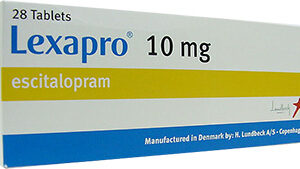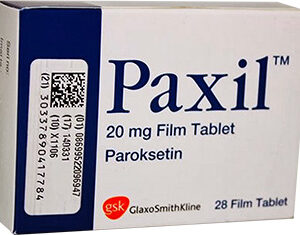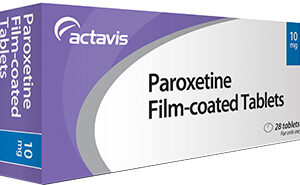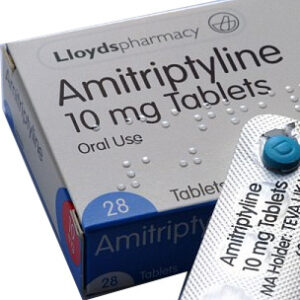Description of Amitriptyline
Amitriptyline is a tricyclic antidepressant used primarily to treat major depressive disorder and a variety of other conditions including neuropathic pain, fibromyalgia, chronic pain conditions, migraine prophylaxis, and certain types of anxiety disorders. Its chemical name is 3-(10,11-dihydro-5H-dibenzo[a,d]cyclohepten-5-ylidene)-N,N-dimethyl-1-propanamine and it has an elimination half-life of approximately 20 hours.
Pharmacodynamics
Amitriptyline exerts its effect by increasing the levels of serotonin and norepinephrine in the central nervous system, by blocking their reuptake at the synaptic cleft. Additionally, it acts on several other receptors and ion channels, contributing to its sedative, anticholinergic, and cardiovascular effects.
Pharmacokinetics
Amitriptyline is well absorbed from the gastrointestinal tract but undergoes significant first-pass metabolism, leading to an oral bioavailability estimated at 30-60%. It is extensively metabolized in the liver by various cytochrome P450 isozymes, mainly CYP2C19 and CYP2D6. Metabolites are excreted primarily in the urine, with minor amounts found in feces.
Indications for Use
Indications for amitriptyline include management of major depressive disorder, neuropathic pain syndromes, migraine prophylaxis, postherpetic neuralgia, and adjunctive treatment of irritable bowel syndrome. Off-label uses include insomnia, attention-deficit hyperactivity disorder (ADHD), and certain anxiety disorders such as generalized anxiety disorder (GAD).
Dosage and Administration
For depression, the typical starting dose of amitriptyline is 25-75 mg daily, which may be increased slowly based on clinical efficacy and tolerance up to a maximum of 150-300 mg per day. Dosages for the management of chronic pain are generally lower, starting from 10-25 mg at bedtime. Dosage may be adjusted based on response and patient tolerability. Amitriptyline is available in tablet form and is usually taken one to four times daily.
Contraindications
Amitriptyline should not be used in patients with a known hypersensitivity to tricyclic antidepressants. It is contraindicated during the acute recovery phase following myocardial infarction. Concomitant use with monoamine oxidase inhibitors (MAOIs) is contraindicated due to the potential risk of serotonin syndrome. It should also not be used in individuals with a history of cardiac arrhythmias, particularly those that prolong the QT interval.
Drug Interactions
Amitriptyline may interact with other medications that cause central nervous system depression (such as alcohol, benzodiazepines, opioids, and other antihistamines) enhancing their sedative effects. It can also interact with other antidepressants, anticholinergic drugs, sympathomimetic agents, thyroid medication, anticoagulants, and drugs affecting hepatic enzyme metabolism (CYP2D6 and CYP2C19 substrates, inhibitors, and inducers).
Adverse Effects
Common adverse effects include dry mouth, constipation, urinary retention, blurred vision, drowsiness, and weight gain. Serious side effects may include arrhythmias, orthostatic hypotension, seizures, and the possibility of suicidal thoughts or behavior in patients under 24 years of age. Anticholinergic effects such as tachycardia, confusion, and memory impairment may be more prominent in the elderly.
Pregnancy and Lactation
Amitriptyline falls under Pregnancy Category C, meaning it should only be used when the benefits outweigh the risks to the fetus. It is excreted in breast milk and could affect a nursing infant; therefore, a decision should be made whether to discontinue the drug or to discontinue breastfeeding, taking into account the importance of the drug to the mother.
Overdose Management
In the event of overdose, critical manifestations can include cardiac dysrhythmias, severe hypotension, convulsions, and CNS depression, potentially leading to coma and death. Supportive care and symptomatic treatment should be initiated. The use of gastric lavage, activated charcoal, and a poison control center consultation are recommended. Cardiac rhythm and vital signs monitoring are essential.
Monitoring Parameters
Clinicians should monitor blood pressure, heart rate, and electrocardiograms, especially in patients with known cardiovascular risk. Liver function tests and complete blood counts are advised periodically. Monitoring for worsening depression and emergence of suicidal thoughts, especially in the early stages of treatment or during dosage changes, is crucial.
Storage and Handling
Amitriptyline should be stored at room temperature away from light and moisture. Tablets should be kept in their original packaging and out of reach of children to prevent accidental ingestion.
Instructions for Patients
Patients should be instructed to take amitriptyline exactly as prescribed. They should be cautioned not to drive or use heavy machinery until they know how amitriptyline affects them due to potential drowsiness or dizziness. Patients should also be informed of the potential anticholinergic effects, the risk of suicidal thoughts and behaviors, and the importance of regular follow-up appointments to monitor their response to the medication. They should be advised to report any adverse reactions or unusual symptoms to their healthcare provider promptly.







Reviews
There are no reviews yet.